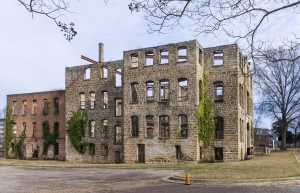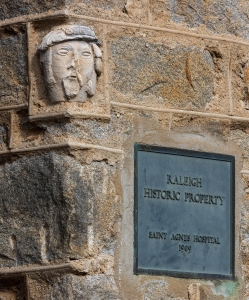Now an abandoned shell of a building, St. Agnes Hospital is a largely forgotten but very important piece of African American history. Located on Saint Augustine’s University campus, the towering stone ruins and large, empty windows allow visitors and passersby a peek into what once was the most advanced hospital and nurse training center for African Americans in the Southeast.
Before we dive into the history of St. Agnes, it’s important to understand how and why it was founded. Originally known as Saint Augustine’s Normal School, Saint Augustine’s University is a private historically Black college and university (HBCU) founded in 1867 by Episcopal clergy in an effort to educate formerly enslaved individuals. Sara Hunter, the wife of Reverend Aaron Burtis Hunter, the school’s fourth principal, recognized the need for medical care for and by African Americans and founded St. Agnes Hospital on school grounds in 1896.

In the beginning, resources were limited — the hospital was equipped with one cold water faucet in the kitchen and a wood stove for sterilizing equipment and heating water. Despite the hospital’s primitive infrastructure, nursing students at St. Agnes attended lectures and received on-the-job training and provided inpatient and outpatient care to African Americans in the surrounding area.
By 1898, the first two nurses graduated from St. Agnes after an 18-month training program. By 1903, the hospital expanded to include new facilities as well as an operating room. In 1904, the building was severely damaged in a fire and the current structure was erected and ready for occupation by 1909.

In time, St. Agnes became the largest hospital for African Americans between Atlanta and Washington, D.C. After the Training School for Nurses was accredited by the American Medical Association in 1937, the hospital officially separated from the school so they could receive county and city financial aid. By the late 1940s, St. Agnes began offering a five-year course of study leading to a bachelor of science degree in nursing (the first Black institution in the Mid-Atlantic region to do so).
Eventually, St. Agnes closed its doors after the Wake County Medical Center opened in 1961, and the property was declared a Raleigh Historic Landmark in 1979.
While still visible from the street, St. Agnes is not quite as accessible as it once was.
“Getting on campus might be a little harder now,” said Chris Baker, the circulation librarian at Saint Augustine’s University. “Several HBCUs across the country have been experiencing bomb threats, and although SAU has not been one of these, our security has tightened considerably. I would encourage interested folks to reach out to the Marketing and Communications department if they are interested in visiting. It is great history and a part of Raleigh that needs to be displayed.”








This article is so informative. Thank you for this. Often times I know Saint Agnes is forgotten about and I’m sure it’s passed by many every single day.